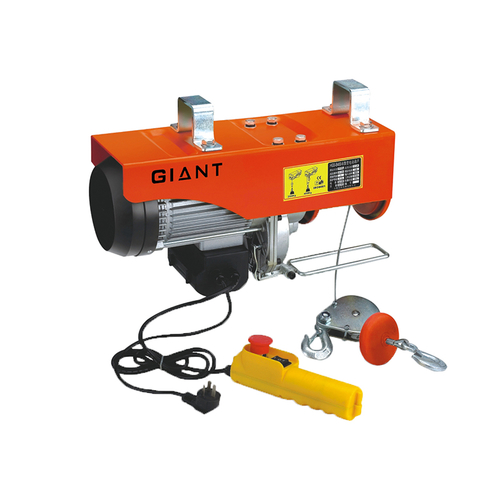Industrial shifting skates are widely used in factories, construction sites, and equipment maintenance scenarios to move heavy loads such as machinery, containers, and structural components. Their safe operation is not only related to the protection of equipment and property but also directly affects the personal safety of operators. To avoid accidents such as load tipping, skate slippage, or personnel injury, a series of strict safety precautions must be followed during use. This article will explore key safety points through targeted questions and professional analysis.
Content
What Pre-Use Inspections Are Indispensable for Safety?
Before using industrial shifting skates, thorough inspections are the primary line of defense against potential risks. First, it is necessary to check the overall structure of the skates: are there any cracks, deformations, or loose parts in the frame, rollers, and connecting components? Damaged frames may fail to bear the load, while loose rollers can cause sudden movement deviations . Second, the roller performance needs to be verified—do the rollers rotate flexibly without jamming, and is the bearing lubrication sufficient? Poorly lubricated or stuck rollers will increase friction during movement, leading to excessive force and potential skid . Additionally, the load-bearing capacity label of the skates must be confirmed to ensure it matches or exceeds the weight of the load; overloading is one of the main causes of skate damage and load collapse . It is also essential to inspect auxiliary tools such as fixing straps and jacks for wear or damage, as unreliable fixing devices can result in load displacement during transportation . Only after confirming that all components are in good condition can the skates be put into use.
How to Ensure Rational Matching of Load and Skates?
The rational matching between the load and industrial shifting skates is a core safety requirement that directly affects the stability of the moving process. First, the total weight of the load must be accurately calculated, including the weight of the equipment itself and any additional fixtures. Based on the total weight, the number and type of skates should be selected—for example, heavy loads may require multiple skates distributed evenly to disperse pressure . The placement position of the skates is equally critical: they should be placed at the load’s stress points (usually near the bottom corners) to ensure the center of gravity is stable and avoid tilting . For irregularly shaped loads, it is necessary to use auxiliary supports to adjust the center of gravity, ensuring it is within the support range of the skates . Additionally, the load distribution among multiple skates must be balanced; uneven force distribution can cause individual skates to overload and fail . It is recommended to conduct a pre-test after placing the load on the skates—lightly pushing the load to check if it moves smoothly without tilting or slipping before formal transportation.
What Operational Norms Must Be Followed During Use?
Standardized operational procedures are essential to ensure the safety of using industrial shifting skates. First, the operator must receive professional training to master the correct use methods, including how to place the skates, adjust the direction, and control the moving speed . During load lifting, jacks should be used to lift the load evenly—sudden lifting or uneven force can cause the load to shake and damage the skates . When moving the load, the force should be applied evenly and smoothly, avoiding violent pushing or pulling, which can lead to skid or roller damage . It is strictly prohibited to stand on the load or between the load and fixed objects during movement to prevent crushing accidents . For long-distance movement, regular stops should be made to check the state of the skates and the load—are the rollers overheating, are the fixing straps loose, or is the load shifting? . Additionally, the moving route should be cleared in advance, removing obstacles such as debris, pits, or oil stains to ensure a flat and smooth path; uneven ground can cause the skates to get stuck or the load to tip over.
拷贝.jpg)
How to Adapt to Different Environmental Conditions for Safe Operation?
Industrial shifting skates are used in various environmental conditions, and adapting to the environment is an important part of ensuring safety. On smooth concrete floors, ordinary skates can be used, but anti-slip measures should be taken if the ground is wet or oily—for example, laying non-slip mats under the skates to increase friction . On uneven or rough surfaces, skates with large-diameter, wear-resistant rollers should be selected to improve passability and stability . In low-temperature environments, attention should be paid to the lubrication of the rollers—some lubricants may solidify at low temperatures, affecting the flexibility of the rollers, so low-temperature-resistant lubricants should be used . In high-temperature environments, it is necessary to avoid prolonged continuous operation to prevent overheating of the rollers and bearings, which can reduce their load-bearing capacity . Additionally, in dusty or corrosive environments, the skates should be cleaned and maintained in a timely manner after use to prevent dust or corrosive substances from entering the rollers and bearings, affecting their service life and safety performance.
What Emergency Measures Should Be Prepared for Potential Risks?
Even with thorough preparations and standardized operations, unexpected risks may still occur during the use of industrial shifting skates, so it is necessary to formulate corresponding emergency measures. If the load tilts during movement, operators should immediately stop applying force and not attempt to correct it by pulling or pushing—instead, use jacks to support the tilted side and adjust the position of the skates to rebalance the load . If the skates get stuck, do not use excessive force to pull them; instead, check the obstacle and remove it or adjust the moving direction . In the event of roller damage or skate failure, the load should be safely lifted and placed on a stable support using jacks, and the damaged skates should be replaced before continuing . It is also necessary to ensure that first-aid kits are available near the operation site and that operators are familiar with basic first-aid knowledge to deal with potential injuries such as crushing or slipping . Additionally, a safety warning system should be established—setting up warning signs around the operation area to remind unrelated personnel to stay away and assigning special personnel to monitor the operation process to promptly discover and handle potential risks.
The safe use of industrial shifting skates requires comprehensive consideration of pre-use inspections, load matching, operational norms, environmental adaptation, and emergency preparedness. By strictly following these safety precautions, the risks of accidents such as load tipping, skate failure, and personnel injury can be effectively reduced, ensuring the smooth progress of heavy-load moving operations. Enterprises should attach great importance to the safety training of operators, establish standardized operating procedures, and conduct regular inspections and maintenance of shifting skates to maximize the safety and reliability of their use. In the context of continuous industrial development, the safety requirements for heavy-load moving will become increasingly stringent, and future industrial shifting skates may integrate more intelligent safety technologies, such as automatic load monitoring and anti-tilt alarms, to further improve operational safety.



 English
English Español
Español






